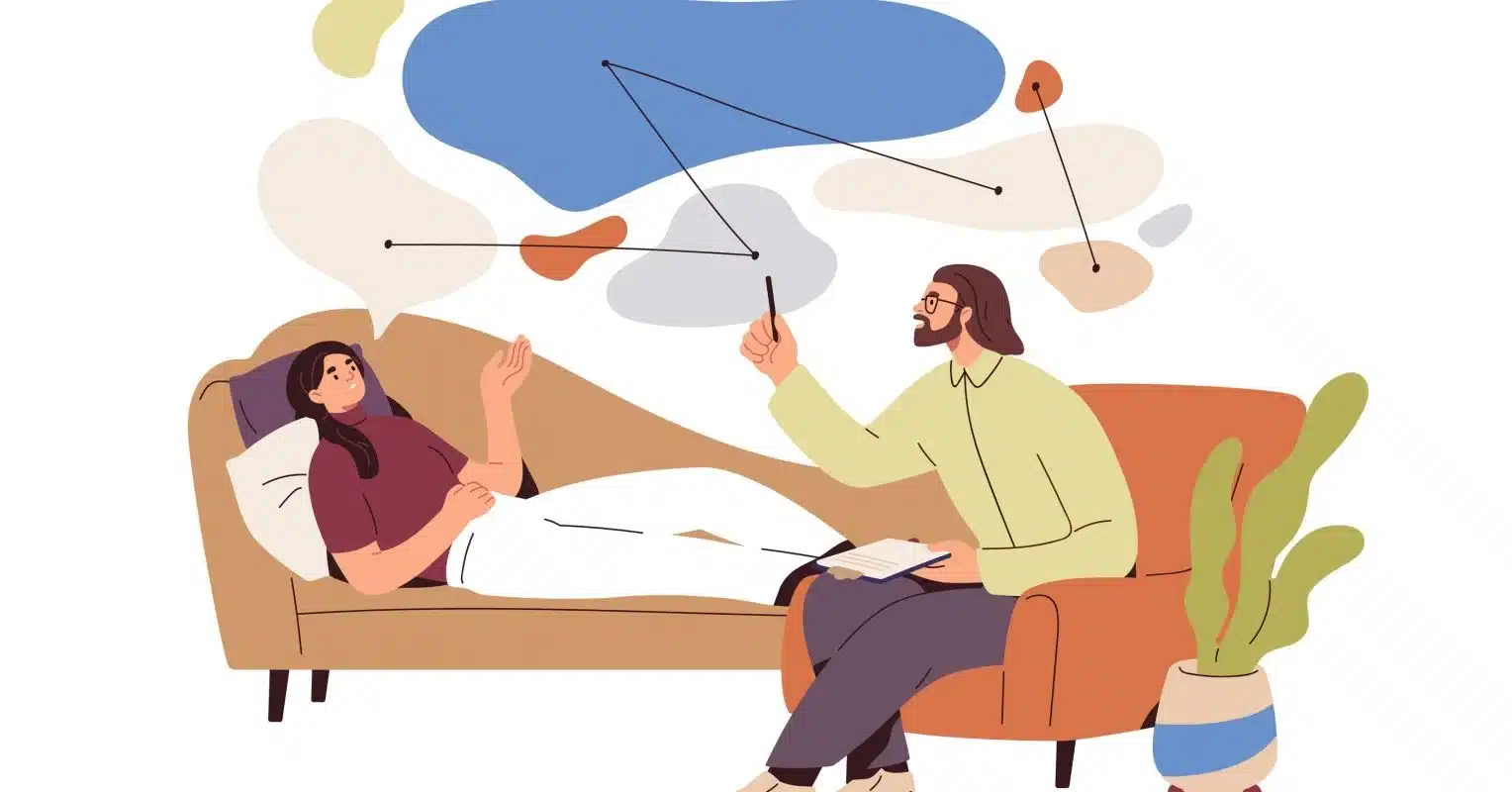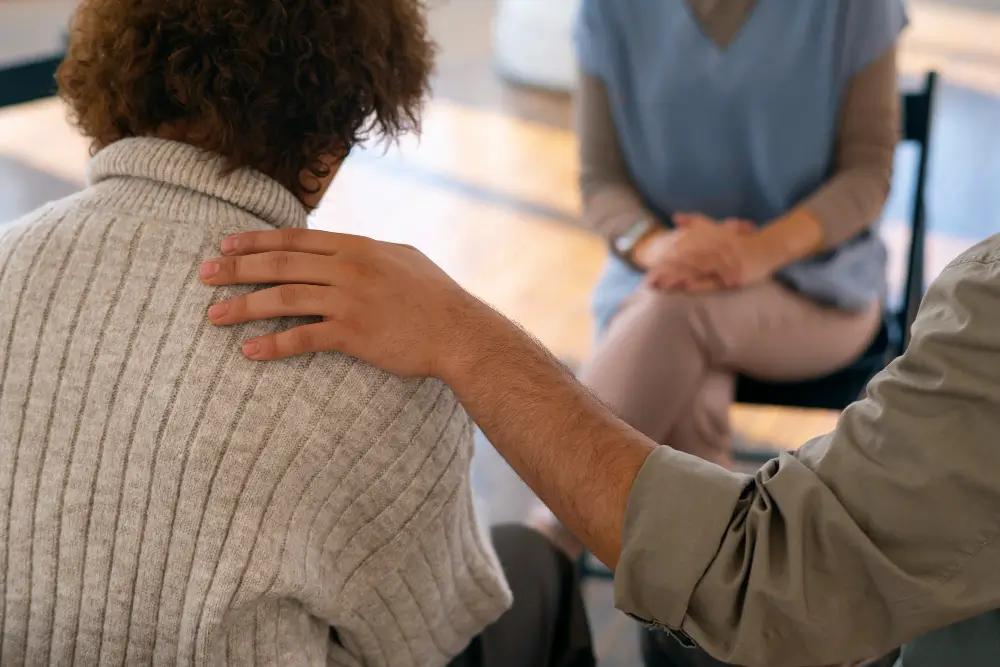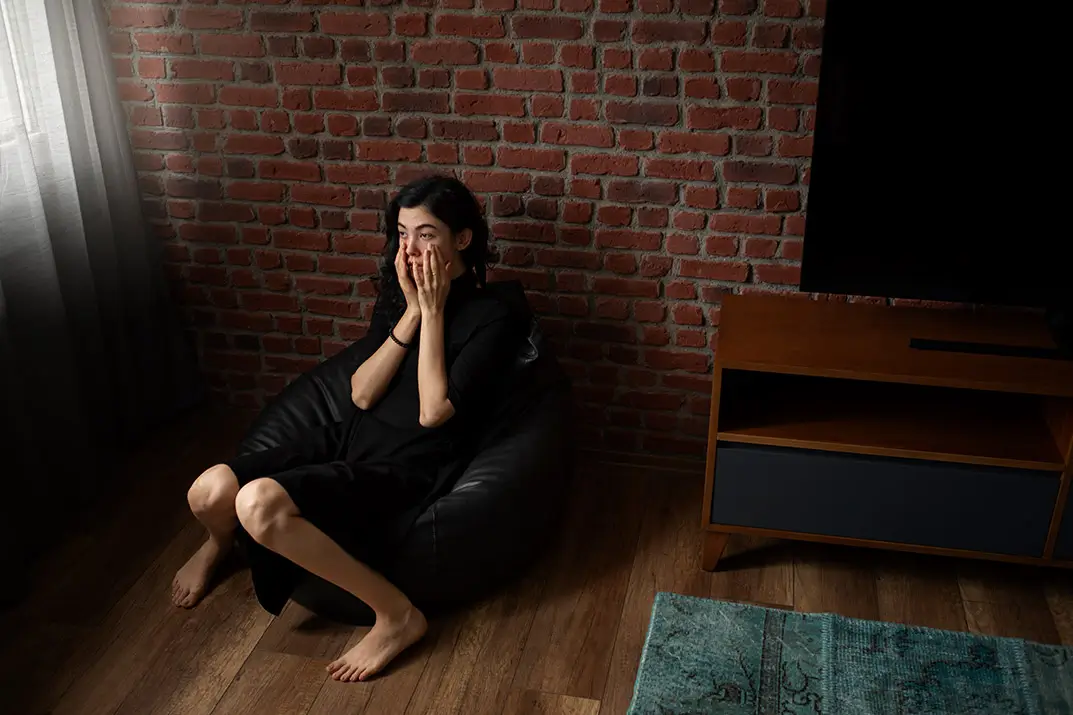If you want to dive into Psychodynamic Therapy and deep-dive into types of psychodynamic therapy, this is your place to start with. Psychodynamic therapy helps you understand your thoughts, feelings, and behaviors by understanding your past experiences. Additionally, they consciously and unconsciously shape your life and relationships. The aim of psychodynamic therapy is not to talk about the past but to understand how the past affects the present life of a person and fulfilling life in the present. This therapy helps you discover self-destructive patterns and beliefs that put you back and help you overcome them. Moreover, the success rate of Psychodynamic Therapy is 79%. Let’s understand all things in detail about Psychodynamic Therapy.
Your Trauma Doesn’t Deserve Another Day of Your Life
What Is Psychodynamic Therapy?
Psychodynamic Therapy is in-depth talk therapy or psychoanalytic therapy. This therapy focuses on a person’s present behavior, unwanted thought patterns, and symptoms of the patients that arise due to past trauma. Additionally, this therapy provides information on how individuals interact with their loved ones. This therapy requires a smaller number of sessions to help a patient reach their goals. Some clients use this approach for a short period, while some use a long-term therapy approach. This therapy helps in identifying emotional thoughts, childhood trauma, and belief systems. Psychodynamic therapy helps families, individuals, couples, and groups.
Types of Psychodynamic Therapy
Several types of psychodynamic therapy focus on exploring unconscious processes and past experiences to understand current emotional issues. Let’s understand, and in detail the type of therapy.
1. Brief Psychodynamic Therapy
It is a type of psychodynamic therapy that takes only a few sessions or at times, only one session might be sufficient. In the first meeting, the therapist identifies an event that triggered a patient’s anxiety and develops a coping technique.
Brief Psychodynamic Therapy is useful in the treatment of the following events:
- Brain injury
- Sexual violence
- Survivors of terrorist attacks
- A family tragedy like divorce or loss of loved ones.
2. Psychodynamic Family Therapy

Psychodynamic family therapy focuses on family issues; it can be the two individuals in a loving relationship, children and their parents, grandparents, siblings, or a joint family issue. This treatment is long-term and usually solves chronic family issues. This therapy focuses on solving disputes. Also, the therapist sees the problem from each family member’s lens, so they dig deeper into the root cause of unhealthy relationships among the family members. Additionally, once therapists identify the root cause, they make a plan to make each family member understand each other, which creates a healthy relationship.
3. Psychodynamic Art / Music Therapy

Psychodynamic Art or Music Therapy is a third type of psychodynamic therapy. This non-traditional style of therapy allows a person to explore emotions and moods through music or art. This therapy is non-structured and non-directive. There is no need for any talented musical or experienced artist; the patient can express themselves with music and art in their own way. For example, they can choose a song that they think resonates with their mental and emotional states. Also, they can make a drawing that is representative of the event, such as childhood trauma or abuse in office, anything. This treatment is suited for people who find it difficult to speak and people who feel overwhelming anxiety. Music or art helps relieve anxiety and becomes a medium for expression.
How do types of Psychodynamic Therapy work?
Psychodynamic therapy is different from other therapies because it focuses on recognizing and overcoming negative feelings, expressing, acknowledging, and understanding a patient to improve interpersonal experiences and relationships. In this way, patients understand how their past emotions and trauma affect their current decision-making, behavior, and relationships. Additionally, therapy aims to help those who are aware of social difficulties but face difficulties in overcoming problems on their own. This Psychodynamic therapy helps patients analyze and resolve their current problems and change their behavior through understanding their emotions and thought processes.
Theory of Psychodynamic therapy
The theory of Psychodynamic therapy believes that the behavior of a person is influenced by unconscious thought. It is the basis for the “Psychodynamic Diagnostic Manual,” which was released in 2006.
The key concept of Psychodynamic therapy is as follows:
- Psychodynamic therapy focuses on the psychological roots of emotional suffering. A person needs to do a self-examination to know the root cause of the problem.
- The theory of Psychodynamic therapy states that events in the past and relationships affect people as adults. In therapy, the therapist and patient discuss problems with each other and try to solve them.
- The relationship challenges and addictive behavior arise due to uncovering defense mechanisms such as denial, repression, and rationalization.
Benefits of Psychodynamic Therapy
The benefits of Psychodynamic Therapy in a wide range of psychological disorders, such as follows:
- Depression
- Anxiety
- Personality disorders
- Addictions
- Social anxiety disorder
- Eating disorders
- Panic disorders
- Post-traumatic stress disorder
- Physical issues
Reduces Depression and Anxiety
When a person is taking psychodynamic therapy, then their self-esteem and self-compassion improve. Also, it helps improve coping abilities and relationships and develop healthy habits. As a result, depression and anxiety symptoms are reduced.
Cochrane Collaboration has analyzed 33 studies that short-term psychodynamic therapy improved patients’ depression and anxiety symptoms.
Improves Social Functioning
An analysis published in the Archives of General Psychiatry that 17 randomized controlled trials found evidence that psychodynamic therapy is more effective than other types of psychotherapy, such as cognitive behavioral therapy.
Improves Personality Traits and Relationships
An American Psychologist published an analysis where 160 studies focus on psychodynamic therapy, and in those studies, more than 1,400 patients have mental health problems. According to the research, the therapy helps patients Improve Personality disorders and Relationships.
Additionally, psychodynamic therapy is a psychological process that helps patients in their life changes even after therapy ends. The therapy helps patients in self-exploration, understanding their emotional blind spots, and improving their relationship with loved ones.
What to expect from various types of Psychodynamic Therapy?
A patient can expect the following things during Psychodynamic Therapy:
- The therapist helps patients identify their goals and important issues, so the therapist creates a structure for the sessions. Also, it helps solve issues quickly.
- The patients talk freely with therapists and are open about themselves, such as current issues, fears, desires, and dreams.
- The session takes place for one hour, and it takes place once or twice per week. Many people took psychodynamic therapy for a shorter time than other psychoanalytic sessions, with a duration of six months to one year.
- According to the research, patients often experience improvements after therapy ends, with follow-up sessions after the therapy.
Tips/Techniques of Psychodynamic Therapy

The therapist understands the dots between their past experiences and their current problems in this therapy. The therapy focuses on identifying your thoughts and behaviors to achieve the goal. Let’s understand the techniques therapists use to carry the process.
- The patient talks openly about their mind and their feelings with open talk discussion.
- Free association is a practice where the therapist says a word, and the patient responds with the first word that comes to mind.
- Ask patients to write journals and identify their choices and existing problems.
- The therapist considers ways the patient can be flexible and adaptive and also able to cope with difficult situations.
- Role-playing situations are adopted so therapists can understand patients’ relationship patterns.
This technique is useful in all types of Psychodynamic Therapy.
Risks and Side Effects Psychodynamic Therapy
Every therapy has some risks and side effects when it is taken more than needed and taken from the wrong person. Let’s understand in detail the risks and side effects of such as follows:
- Choose a knowledgeable, licensed, and experienced professional in psychotherapy or mental health conditions.
- Ensure the therapist has advanced training in psychodynamic therapy.
- Watch for the emergence of new symptoms during therapy.
- Be vigilant for suicidal thoughts or tendencies.
- Monitor for occupational problems that may arise.
- Address any strains in relationships that may result from therapy.
- Watch for signs of therapy dependence.
FAQs: Types of Psychodynamic Therapy
Q: Who is the right candidate for this therapy?
A: Individuals who are looking for self-reflection where they want to get insight into themselves and their behavior are the right candidates for this therapy. Psychodynamic therapy is limited to 25 sessions, but it is a longer process.
Q: Is dream analysis used in psychodynamic therapy?
A: Dream analysis is used in psychodynamic therapies. It is a therapy that unlocks a patient’s unconscious things, such as hidden fears, desires, and motivations. A person doesn’t have control over their dreams, but their negative thoughts lead to bad dreams which need to be controlled.
Q: Is psychodynamic therapy effective?
A: Yes, it is effective in solving a variety of psychological problems. However, measuring it is a mostly tricky task; sometimes, it is easy to measure with specific acute symptoms
noted in a press release by the American Psychological Association. According to the 2017 review published in the American Journal of Psychiatry, psychodynamic therapy is as effective as other treatments.
Your Journey to a Brighter Tomorrow
Conclusion
According to psychodynamic theory, relationships and situations of past life affect the adults in current times. When a person talk about their problem with therapies, they can find ways to solve them and improve their mental and emotional well-being. The benefits of therapy are that it helps in managing depression, anxiety, phobias, and addictions. Also, the goal of therapy is to make a person self-aware of thoughts, emotions, feelings, perceptions, and experiences. The risk of this therapy is that it develops new symptoms, suicidal thoughts, unhealthy social networks or relationships, or therapy dependence.
At Calusa, we’ve crafted an intensive outpatient program to simplify the path toward enduring mental wellness. This program seeks to tackle the root causes of distress, impart new coping skills, foster equilibrium and healing across the mind, body, and spirit, and empower individuals with a sense of passion and purpose.
Calusa Recovery draws inspiration for its emphasis on active living from the collective experiences of its founders, who have navigated the challenging journey of recovery both personally and professionally. Having overcome their struggles and guided numerous others to success, the founders are committed to assisting clients in discovering their route to lasting recovery.










